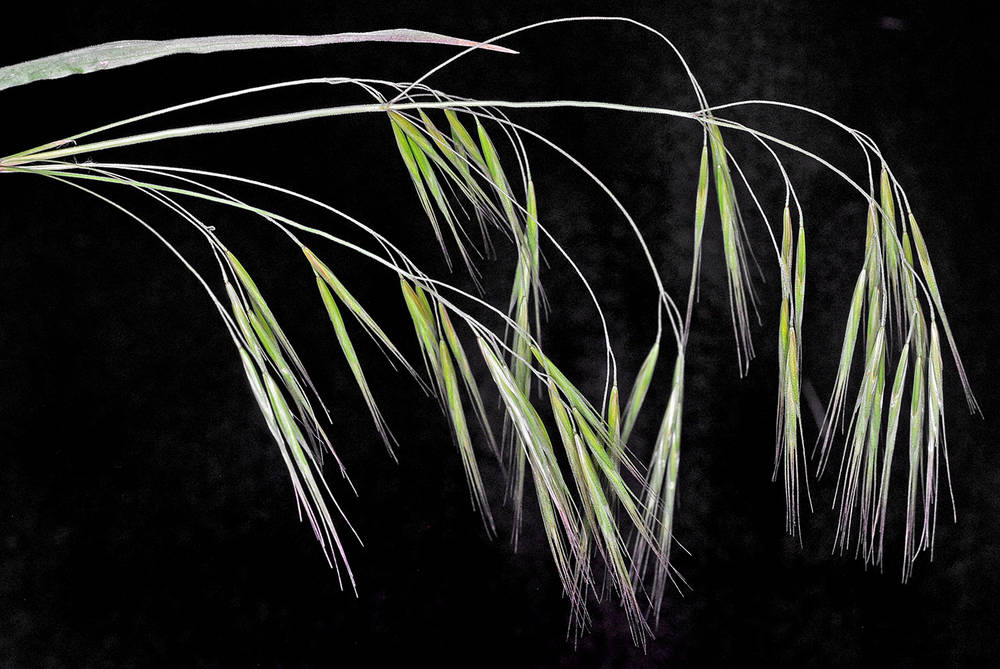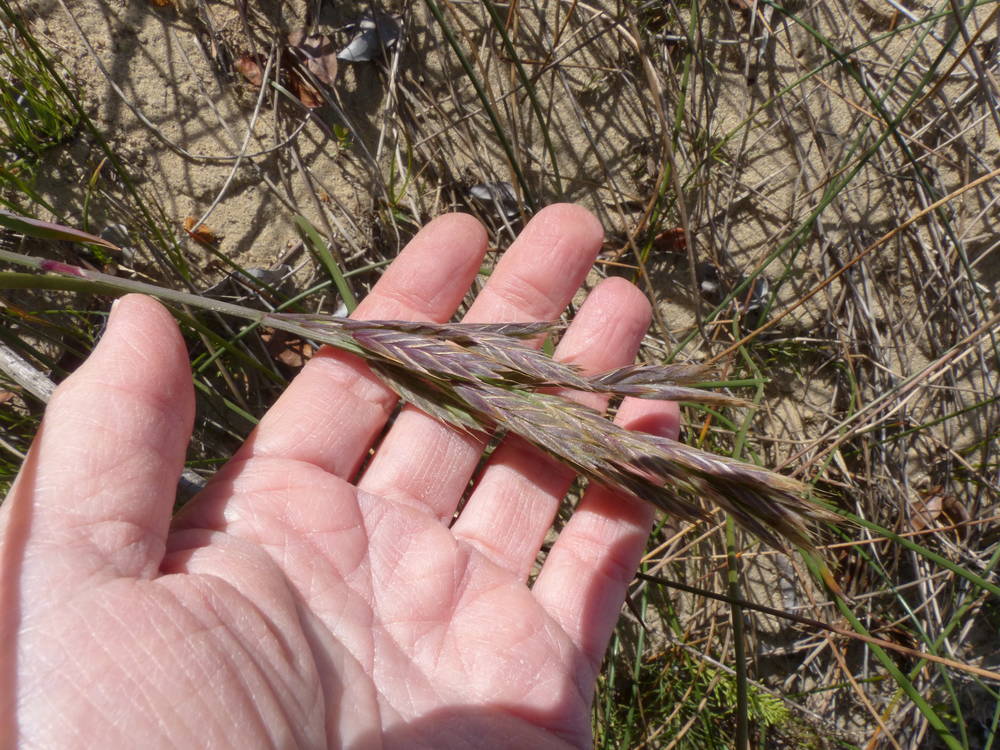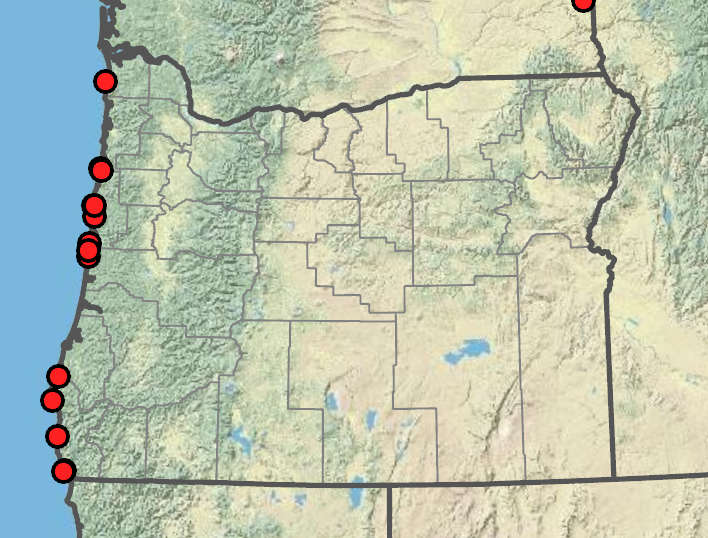Bromus tectorum
Bromus sitchensis var. maritimus
(synonym of Bromus maritimus)
cheatgrass, downy brome, downy chess
maritime brome
puberulent.
to 3 mm thick.
sheaths densely and softly retrorsely pubescent to pilose; upper sheaths sometimes glabrous;
blades 1–16 cm × 1–6 mm, softly hairy on both surfaces.
sheaths smooth or minutely scabridulous, sometimes slightly pubescent distally, not pilose at the throat;
blades 6–13 cm × 6–8 mm; flat;
both surfaces smooth or scabrous.
5–20 × 3–8 cm; open, nodding;
branches 1–4 cm, drooping, 1-sided and longer than the spikelets, usually at least 1 branch with 4–8 spikelets.
9–20 × 2–2.5 cm; dense; erect.
10–20 mm, moderately laterally compressed, not densely crowded, 4–8 florets.
20– 40 mm, usually longer than the branches and pedicels, elliptic to lanceolate, strongly laterally compressed, crowded, overlapping, with 3–7 florets.
villous, pubescent, or glabrous;
lower glumes 4–9 mm, 1-veined;
upper glumes 7–13 mm, 3–5-veined.
pubescent;
lower glumes 8–12 mm; (3)5(7)-veined;
upper glumes 10–13 mm, 7(9)-veined.
9–12 mm, lanceolate, glabrous or pubescent to pilose, 5–7-veined;
tips acuminate; hyaline; bifid, with teeth 0.8–2(3)mm, awned;
lemma awns 10–18 mm; straight.
12–14 mm, lanceolate, distinctly 9–11-veined, strongly keeled at least toward the tip; more or less uniformly hairy;
margins hyaline, often bronze-colored;
tips entire or with acute teeth less than 1 mm;
lemma awns (2)4–7 mm.
0.5–1 mm.
2–4 mm.
=14.
=84.
Bromus tectorum
Bromus sitchensis var. maritimus
Disturbed areas, sagebrush steppe, degraded grasslands, roadsides. 0–2400 m. BR, BW, Casc, Col, CR, ECas, Lava, Owy, Sisk, WV. CA, ID, NV, WA; throughout North America; worldwide. Exotic.
Bromus tectorum is a relatively short grass with drooping inflorescences. Similar B. sterilis and B. diandrus have longer glumes, lemmas, and awns, and spikelets that hang down at a shallower angle than those of B. tectorum. The introduction of B. tectorum to shrub steppe habitats during a time of massive overgrazing in the late 1800s has made restoration of native plant communities difficult or impossible, even where grazing no longer occurs. Fast-growing B. tectorum seedlings outcompete slower growing native grass seedlings for water in drying soils. At maturity, the awns make B. tectorum unpalatable to livestock.
[Originally published in Flora of Oregon as Bromus maritimus.]
Coastal sands. 0–50m. Est. CA. Native.
Bromus sitchensis var. maritimus is distinguished by its very dense inflorescences, laterally compressed spikelets, and coastal habitat on sand dunes and bluffs. Wind and salt spray in coastal habitats can induce other bromes to have abnormally dense inflorescences superficially resembling B. sitchensis var. maritimus. Like many native sand dune species, B. s. var. maritimus is becoming rare due to habitat loss from sand dune stabilization and coastal development.
Barbara Wilson, Richard Brainerd, Nick Otting
- Local floras:
BC,
CA,
OR,
WA
- Local Web sites:
CalFlora,
CalPhotos,
Flora NW,
PNW Herbaria
WildflowerSearch
iNaturalist (observations)
USDA Plants Database
- LBJ Wildflower Center
- SEINet
- Plants of the World Online
- Encyclopedia of Life
- Wikipedia
- Google Image Search





